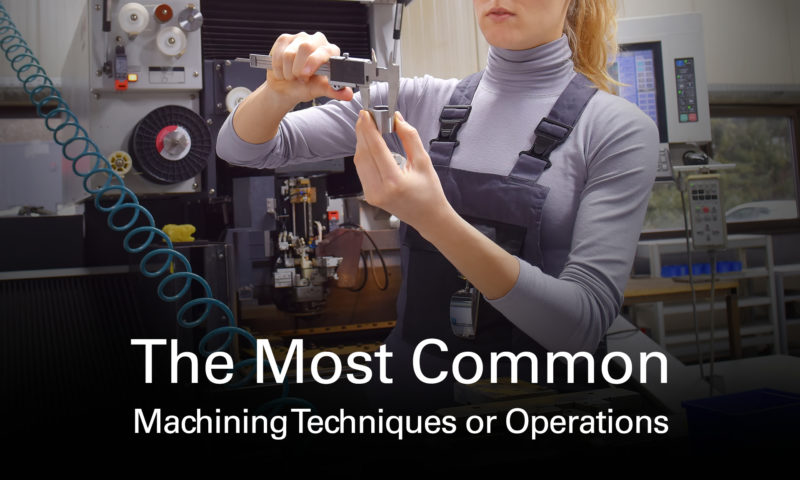Ever look at a metal part and wonder how that thing got made? Whether it’s a practical part like a gear or crankshaft, or an aesthetic piece of metal art, you can bet it was made with the help of machining.
Maybe you’re familiar with the basic techniques from our intro to machining. But the truth is there are lots of different ways to cut and shape metal. In this article, we’ll take a closer look at the most common machining operations. If you’re a beginning machinist or someone just looking to gain a deeper understanding of the field, read on for a helpful overview of what you need to know.
Turning
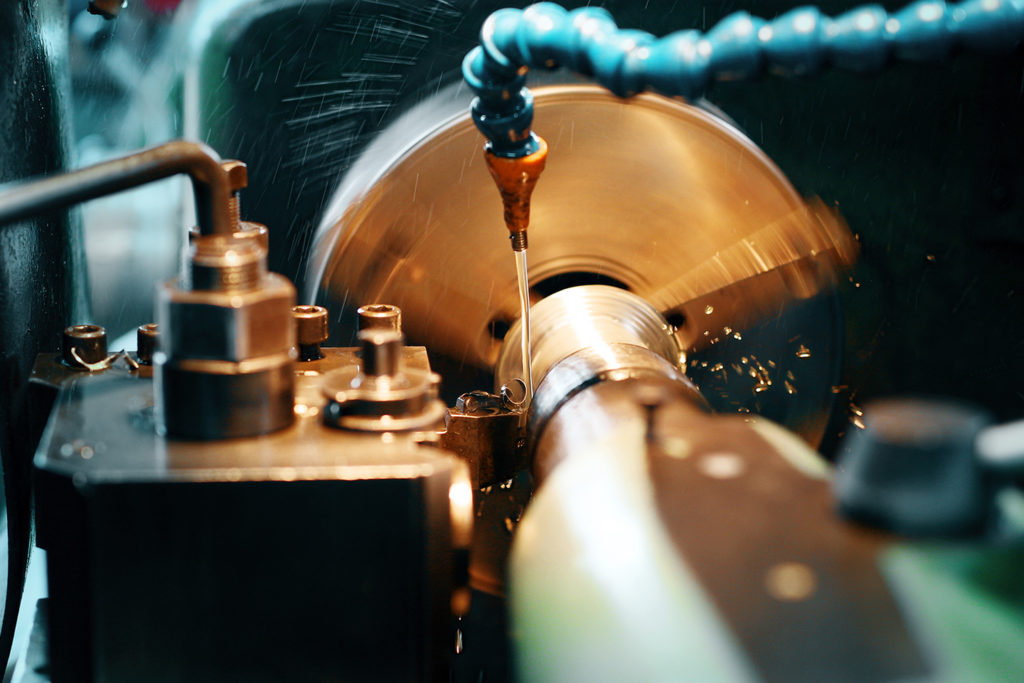
Turning is one of the three core machining operations involving what you might guess from the name: turning the workpiece. This is one of the most versatile machining processes and can be used to make a ton of awesome projects.
A lathe machine rotates a workpiece, while a non-rotating cutting tool moves along a path against the surface, creating specific features such as grooves, tapers, or a flat, round surface.
The resulting shape is most commonly a cylinder, as turning is mostly used for removing material from the outer diameter of a workpiece to shape it. But it can also remove metal from an inside diameter with a boring bar.
Milling
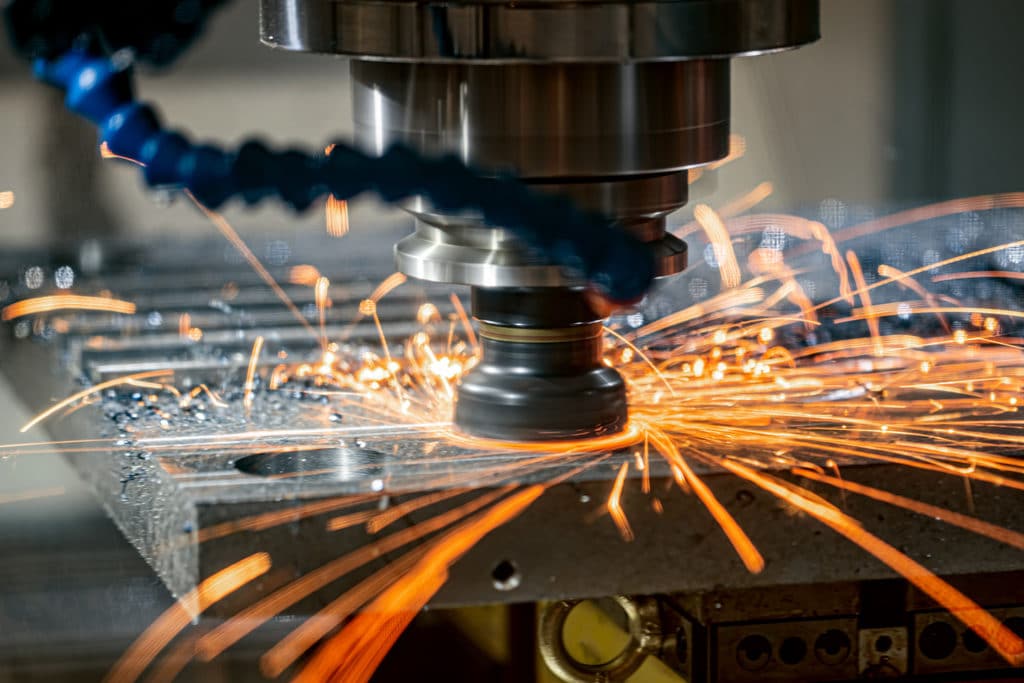
Milling, the second of our three core machining operations, is the opposite of turning. Instead of the workpiece, the rotating cutting tool, and moves against a non-rotating workpiece along different axes.
In the process, you can create a wide variety of precise shapes and features used in various projects. The technique creates flat and irregular surfaces, gears, grooves, and other features.
Drilling
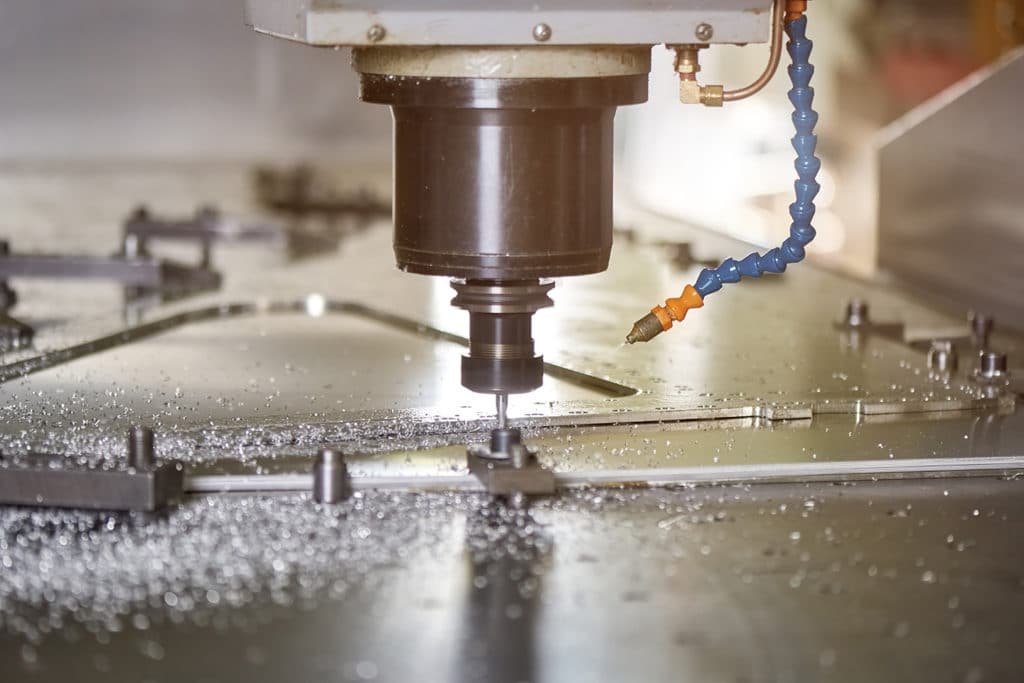
The last of our three core machining operations, drilling, is all about making holes. Move a rotating drill bit against a non-rotating workpiece to create holes for fasteners, bolts, and other hardware. Or create starter holes for other processes, such as boring (more on that below).
With the right bit—made of high-speed steel or carbide—you can do most drilling operations on either a milling machine or a lathe if the hole being drilled is needed on the end of the workpiece. A drill press is less common in machine shops because results are less precise.
Boring is a related operation that makes an existing hole bigger using a single-point cutting tool referred to as a boring bar. Reaming is another adjacent operation. It’s a finishing process with a multi-edge tool that smooths the inside of a hole for maximum precision required in industries like aerospace and medical devices.
Sawing
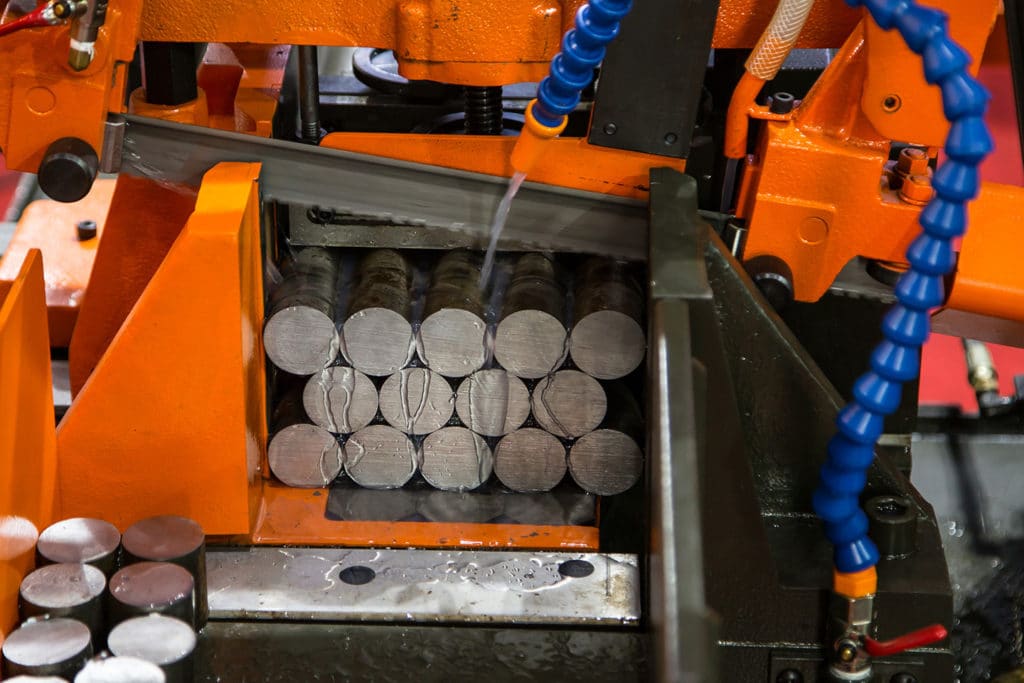
Most people think of sawing in the context of wood, but sawing is equally important in machining. It’s a versatile technique that’s useful to help make a wide array of rough shapes. Machining saw blades come in a variety of tooth shapes and purposes, and the process can be performed on a variety of machines.
Band saws use a long, continuous band blade with teeth on one edge to cut through the workpiece. They’re great for cutting irregular shapes and large pieces of material.
Circular saws use a circular blade with teeth. They’re ideal for making straight cuts.
Hacksaws have a fine-toothed blade to make quick cuts to size smaller workpieces—pipe, bar stock, etc.
Grinding
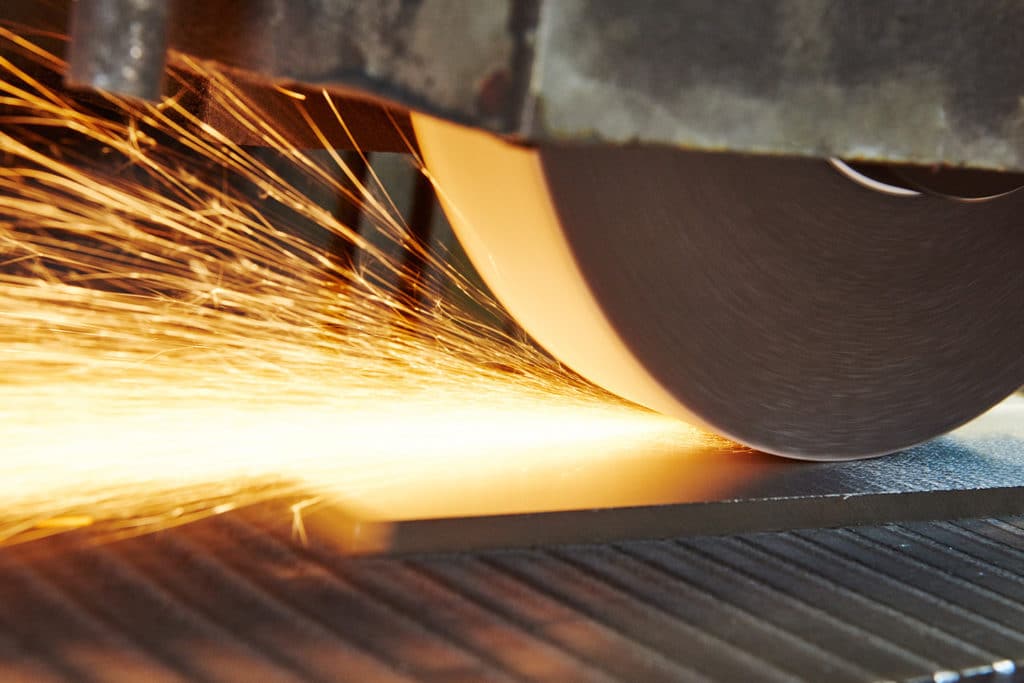
Grinding is a finishing operation that creates smooth surfaces and exact dimensions—gears, bearings, and other mechanical components.
The process involves a grinding wheel covered with an abrasive material, such as silicon carbide. The tool is in the shape of a wheel, which rotates in the grinding machine. Move the workpiece against the wheel to remove material.
Depending on the grinding technique and the type of abrasive wheel, grinding creates finishes from rough to very smooth. Surface grinding creates a flat, smooth surface. Cylindrical and centerless grinding create precisely rounded dimensions on cylinders.
As mentioned in out list of tips for beginning machinists, you should use machines purpose-built for these finishing techniques rather than the common benchtop grinder. Benchtop and belt grinders are better suited to rough maintenance work.
Broaching
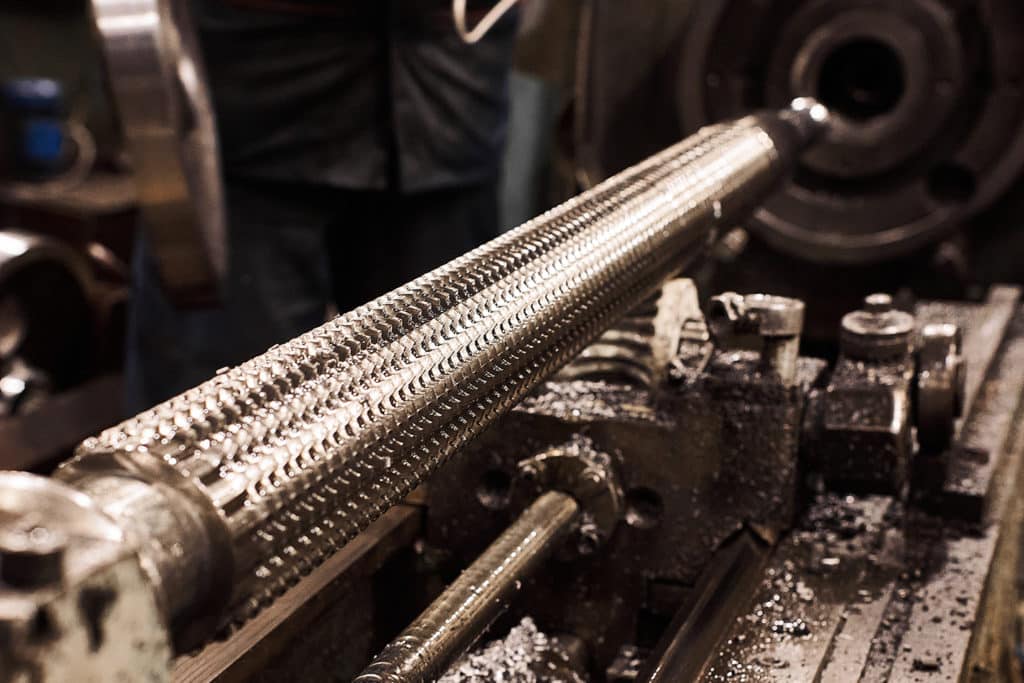
Now that we’ve broached the topic, broaching uses a special cutting tool called a broach (surprise!). It has a series of cutting teeth along its length. A broaching machine pushes or pulls the blade through the workpiece to remove material. You can also perform broaching with a broaching tool on a lathe or a milling machine.
Results include a variety of shapes and finishes on a workpiece, including keyways, splines, and square or hexagonal holes. Broaching is used in manufacturing gears, automotive parts, and other precision components.
Broaching operations include:
- External: Creating a shape on the outer surface of a shaft or other cylindrical part.
- Internal: Making a hole with precise dimensions.
- Surface: Smoothing the outside of a workpiece.
- Keyway Creating a precise keyhole or slot.
EDM
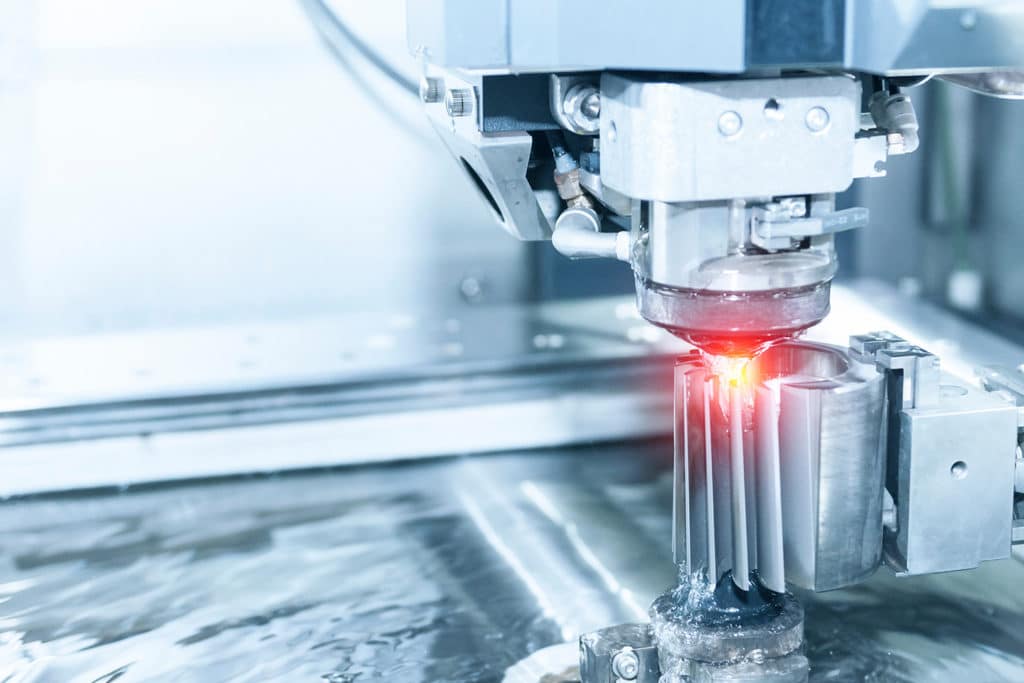
Electrical Discharge Machining (EDM) is a distinctive operation for tricky shapes and hard-to-cut materials (such as hardened steel). EDM—sometimes called spark machining—uses electrical energy to remove material from a workpiece. A spark, created by an electrical charge applied through an electrode, cuts the metal by vaporizing it.
Cool! Actually, it’s quite hot. That’s one reason conventional EDM happens with the workpiece submerged in die-electric fluid, which helps restrict the heat to the cutting zone. Die-electric fluid also helps conduct the current and flush away the cut material.
Wire EDM is a related process. In this case, the electrode is a thin brass or copper wire, which is slowly fed through the workpiece.
It’s a slow process, but EDM is capable of incredible precision in parts with complex geometries and fine finishes. These attributes make this machining technique popular in many industries, including aerospace, automotive, medical, tool and die, and mold making.
Because of the speed, volatility, and cost of these machines they are some of the least commonly found machines inside of a machine shop but they are still beneficial to those requiring an extreme level of precision. Because of the volatility of these machines, they require a precise voltage balance. This is why it’s very important not only know how to choose the correct phase converter but know that the one you choose is a high quality phase converter.
Shaping/Planing
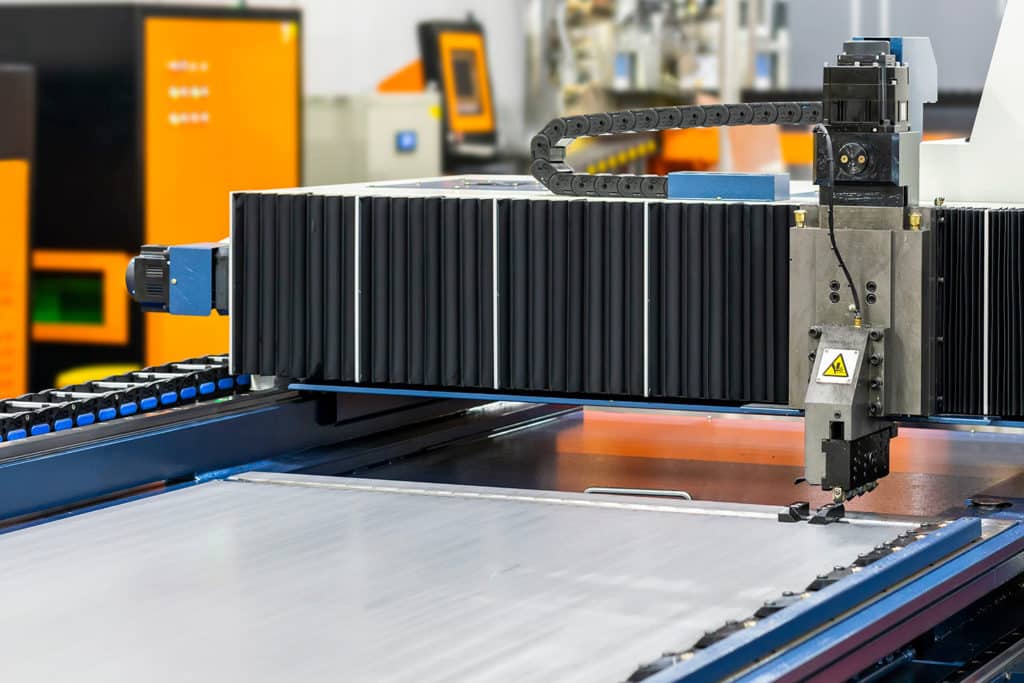
Shaping and planing both create flat surfaces on a workpiece.
Shaping involves a single-point cutting tool moving linearly along the surface of a workpiece to remove material. Machinists use shaping machines for the rough shaping of large workpieces.
Planing is similar to shaping but uses a multi-point cutting tool, and the workpiece moves against the tool. Planing machines often remove small amounts of material to create precise dimensions.
Shaping and planing machines are not as common as they used to be. The continuous cutting action enabled by lathes, milling machines, and grinding machines makes the latter equipment more efficient for these machining techniques.
Hobbing
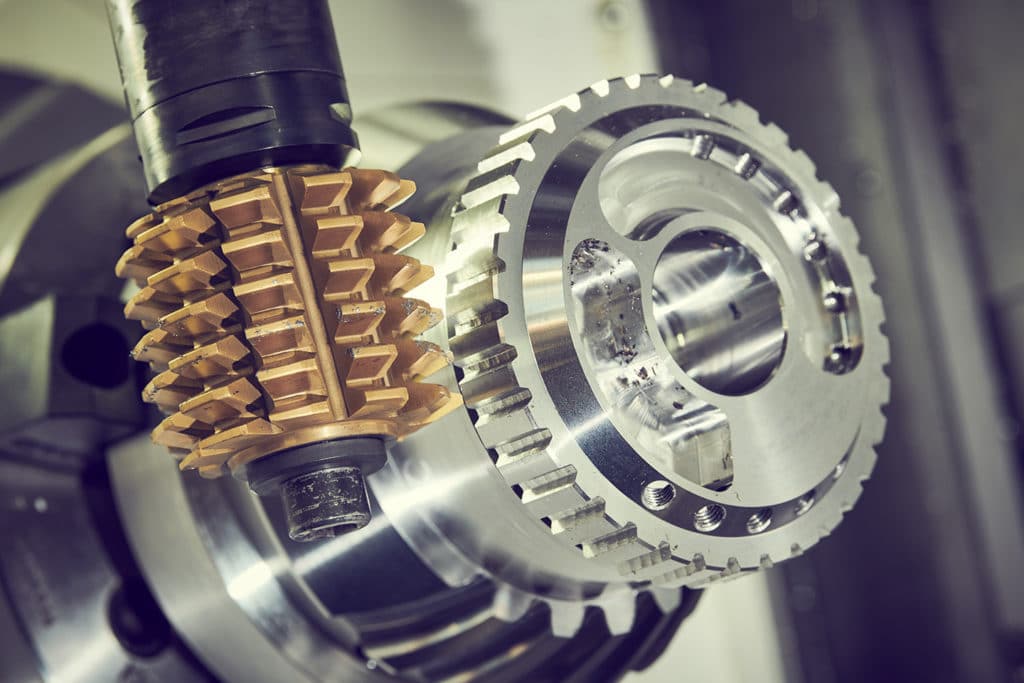
It may be last on our list, but hobbing is no afterthought machining operation. It’s a process used to cut gears. And gears are essential to so many industrial machines.
A hob is a cutting tool with helical teeth. They come in a variety of types to match the application, including spur, chamfer, roller, and spine. In a hobbing machine, both the hob and the workpiece (usually a gear blank) rotate in sync against each other. All along the way, the hob removes material to create the gear.
This high-precision machining operation produces gears with accurate dimensions and tooth profiles.
Continuing Your Machining Explorations
As you can see, today’s machining techniques are about a lot more than making a few cuts in metal.
The wide world of machining encompasses turning, milling, drilling, sawing, grinding, broaching, EDM, shaping and planing, hobbing … and even more. With the help of high-powered machines, these machining processes are becoming more efficient, precise, and productive.
But one thing about high-powered machines: they often require three-phase electricity. How do you power such equipment in your shop, which likely has single-phase electric service?
Consider a rotary three-phase converter. This technology converts your single-phase electricity into balanced 3-phase power. USA-made American Rotary phase converters, for example, can provide power for your whole shop (including both 3-phase machines and single-phase peripherals).
Contact us with questions or discuss sizing needs. And good luck in your ongoing journey of machining discovery!



